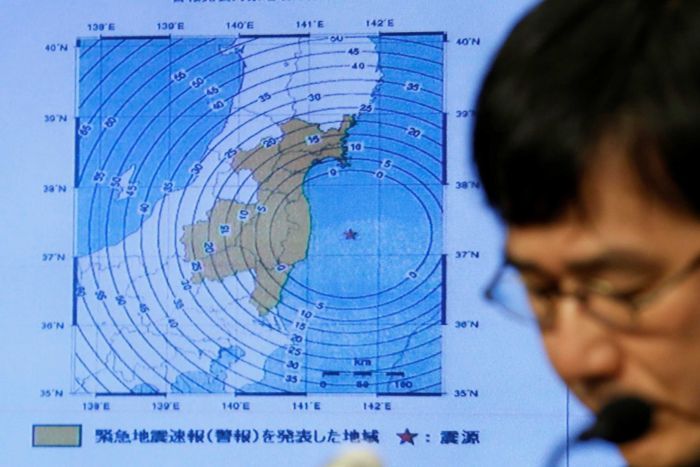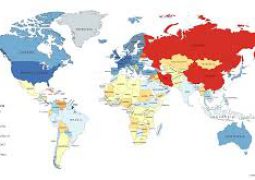Japan earthquake: Tsunami warning downgraded after powerful quake off Fukushima

A powerful earthquake has struck off the coast of Fukushima in north-east Japan, triggering a tsunami as residents were urged to flee to higher ground.
Key points:
- Earthquake was first recorded as magnitude-7.3, later downgraded to 6.9
- A tsunami warning was issued, and small waves reached coast
- The region is the same that was devastated in 2011, triggering a nuclear crisis
The quake hit at 6:00am (local time) and was followed by a number of small tsunamis registered along the coastline, ranging from 30 centimetres to 1.4 metres.
The tsunami warning for Fukushima prefecture and Miyagi prefecture was downgraded to advisory almost four hours after the quake struck, with the Pacific Tsunami Warning Centre saying the threat had largely passed.
“We saw high waves but nothing that went over the tidal barriers,” a man in the city of Iwaki told public broadcaster NTV.
Authorities had warned the waves could continue to rise to a maximum of three metres.
The earthquake had a preliminary magnitude of 7.3 but was later downgraded to 6.9 by the US Geological Survey.
It epicentre was at a depth of about 10 kilometres, off the coast of the Fukushima nuclear power plant, which suffered a triple meltdown after the 2011 quake and tsunami disaster
People were urged to evacuate immediately, with NHK reminding them of the 2011 devastation, which left about 18,000 people dead.
“Please remember the Great East Japan Earthquake and move to higher ground,” it said, also asking residents to help alert elderly relatives to the emergency.
Authorities warned landslides may occur in some areas, with people urged not to return to their houses until all the warnings are lifted.
Fukushima cooling system briefly stops
 PHOTO: People keep a lookout at the mouth of a river after tsunami advisories triggered by an earthquake were issued. (Reuters: Kyodo)
PHOTO: People keep a lookout at the mouth of a river after tsunami advisories triggered by an earthquake were issued. (Reuters: Kyodo)Tsunami waves reached areas including the Fukushima Daiichi power plant.
The No. 2 plant reported that the water used to fuel the cooling system stopped for a brief period of time, but was later reactivated.
A spokesman for Tokyo Electric Power Company (TEPCO) said the cooling pump might have stopped because of the vibration caused to the water pool by the earthquake.
All nuclear plants on the coast were shut down in the wake of the 2011 disaster.
Only two reactors are operating in Japan, both in the south-west of the country.
Even when in shutdown nuclear plants need cooling systems operating to keep spent fuel cool.
‘My windows were shaking’
Japan’s Prime Minister Shinzo Abe said the Government would devote whatever resources were necessary to respond to the quake.
Japan’s Chief Cabinet Secretary Yoshihide Suga said a taskforce had been formed to assist with evacuations and the aftermath.
ABC correspondent Rachel Mealey said she felt the tremor in Tokyo, more than 200 kilometres away from where the quake was centred.
“I haven’t felt one like this in quite a long time. My apartment windows were shaking,” she said.
There were no reports of death or serious injuries several hours after the quake hit.
One woman suffered cuts to her head from falling dishes, Kyodo news agency reported, citing fire department officials.
Earthquakes are common in Japan, one of the world’s most seismically active areas.
Japan accounts for about 20 per cent of the world’s earthquakes of magnitude 6 or greater.
The March 11, 2011, Fukushima quake was magnitude-9, the strongest quake in Japan on record.
The massive tsunami it triggered caused the world’s worst nuclear crisis since Chernobyl a quarter of a century earlier.
- Previous Pakistan’s beautiful but dangerous tribal areas may finally open for tourism again
- Next Myanmar’s War on the Rohingya












